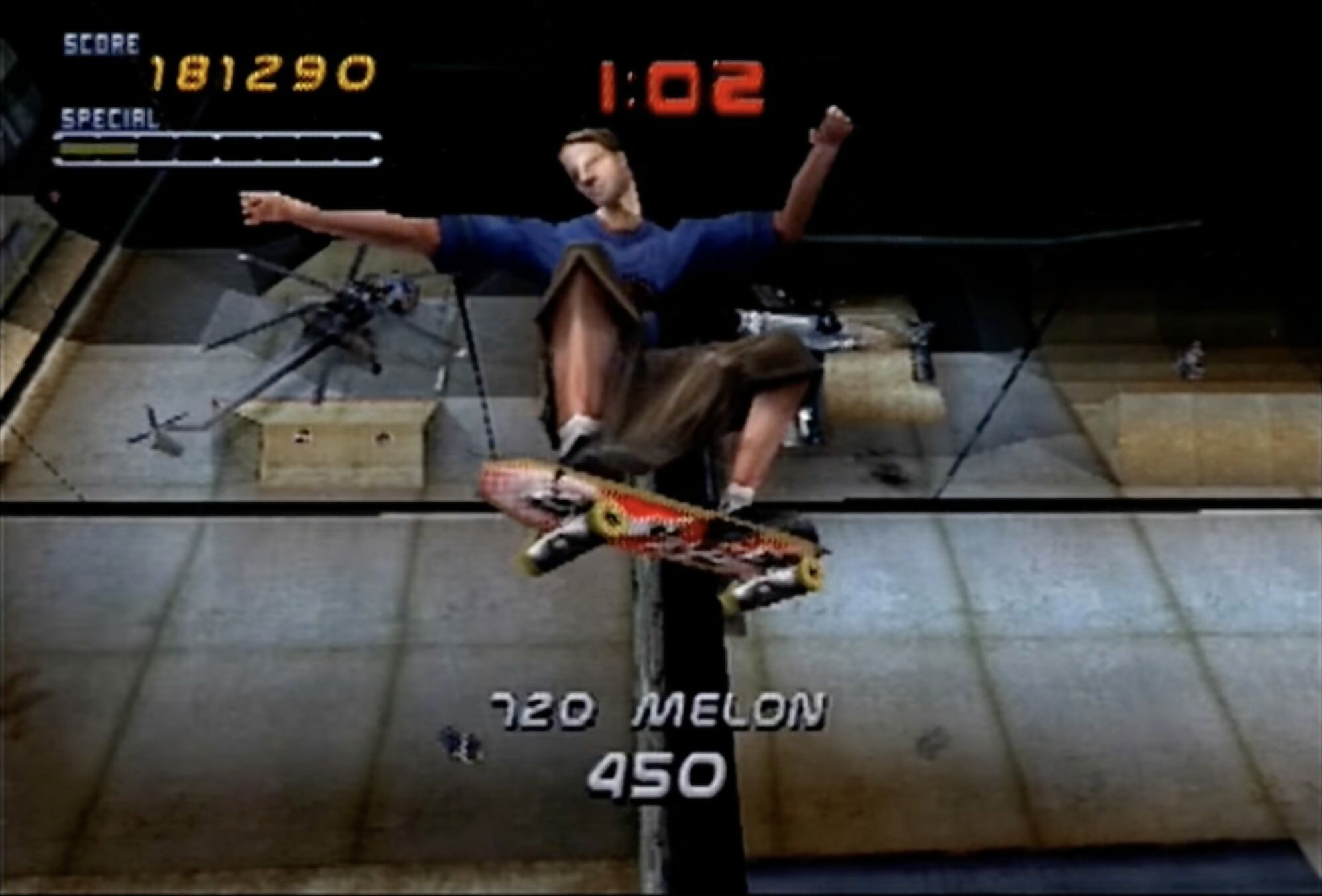
Loved by some, loathed by others, cheat codes have a long and fascinating history…
As long as there have been competitive games, there has been cheating. Maybe it’s just human nature? Even before video games, people were consistently cheating at sports, board games, and, of course, cards – resulting in many a Wild West shootout.
One of the earliest and most basic forms of cheating in video games was to unplug your opponent’s controller from the console. Or to distract them by blocking the view of the TV or even give them a quick ‘accidental’ elbow to the ribs. Some of the early home consoles, including the Magnavox Odyssey, came with an optional lightgun peripheral with which you were meant to shoot bright targets on the screen; it was soon discovered that you could cheat by simply aiming it at a light bulb or other bright light source to get a sure-fire hit.
But what about cheat codes that you type in to give you infinite lives and unlock all sorts of other effects? When and how did they come about? And why have they gone out of fashion?
Type XYZZY
‘Foof!’… You find yourself back at the start of the article. It’s debatable what the first ever cheat code was, but the XYZZY ‘magic word’ in Will Crowther’s Colossal Cave Adventure is a contender. Written on a cave wall, it teleports the player instantly between two locations to avoid a lot of tedious backtracking to return gathered treasure items to the well house near the start.

According to Crowther’s sister Betty Bloom, one of the original playtesters of the 1976 PDP-10 mainframe game, he added it in for her. In a 2002 phone interview, she revealed: “I was bored having to go through all the steps every time, and I said, ‘I want to go directly into the game’.”
If only there was a magic code nowadays to avoid having to download a huge mandatory update when you get a new game.
The XYZZY code was so celebrated, it came to be used in several later games, including Return To Monkey Island and Minesweeper, and also as a command in some operating systems – although sometimes all you get is a jokey ‘Nothing happens’ message.
Press the right buttons
Back in the 1980s and 1990s, arcade-style games had the sort of punishing old-school difficulty that could prove frustrating to anybody lacking the reaction times and dexterity of a top fighter pilot. Even game developers could find them tricky, including the late Kazuhisa Hashimoto, who came up with the most famous cheat code of all: the Konami code. While working on the NES conversion of the Gradius coin-op in 1986, he found the game too difficult to play through during testing. He thus came up with his button-mashing cheat code – Up, Up, Down, Down, Left, Right, Left, Right, B, A – which gives the player a full set of power-ups. In a 2003 Japanese interview with the Game Staff List Association website, he revealed: “Because I was the one who was going to be using it, I made sure it was easy to remember.”

Whether it was intended to be left in the released game remains a mystery, but the memorable code went on to be used – sometimes in a modified form depending on the platform – in numerous Konami franchises, including Contra, Castlevania, Teenage Mutant Ninja Turtles, and Dancemania. It was also adopted by other companies to use in games such as Crash Bandicoot, Kerbal Space Program, and Grand Theft Auto: The Trilogy – The Definitive Edition. It has even appeared in non-gaming contexts such as web browsers, phones, and smart speakers – try saying it to Alexa, Siri, or Google Assistant.
Testing times
As in Hashimoto’s case, cheat codes would often be used for testing purposes during game development, so as to avoid replaying early levels, and sometimes end up in the final version released to the public. An early example is the code in the original Bug-Byte 8-bit versions of Manic Miner (1983), which was based on programmer Matthew Smith’s driving licence number – typing it in brings up a level select.
Andy Braybrook, creator of classic C64 games such as Paradroid and Morpheus, says that publishers would sometimes put pressure on developers to add cheat modes “so they could see that the game is all there, or skip past a bit that wasn’t working properly. They might then insist that the cheat mode is in the final master copy so they can test it first”. He notes that, “if there’s a cheat code in the final version, possibly only told to publishers and reviewers, it’s going to get published sooner or later”.

Sensible Software’s Jon Hare recalls using cheat codes to access different parts of games. “In Mega-lo-Mania, we used different start-up codes you had to type in which took you to different save games.” The finished game features an option to enter passwords to skip to later levels with extra lives. For Wizkid, Sensible included a novel cheat system based on the doors to the gents and ladies toilets in the first level: “It’s possible to find all sorts of cheats by entering the doors in a certain sequence,” Hare says. “After a while, entering the door spits you back out into the lobby and by entering the doors in different sequences, there are a bunch of different cheats giving you extra money, diamonds, and other goodies.”
Pig in a poke
Even if developers failed to include codes in their final games, that wouldn’t deter some players from finding a way to cheat. No self-respecting games magazine of the 1980s or 1990s would be without a tips section featuring POKEs to hack into and modify games to your advantage. In many early 8-bit computer games, you could simply start loading a game from tape or disk, interrupt it, enter a POKE command to insert a new value into a memory address, such as for infinite lives, then continue. Some POKE cheats would take the form of multi-line mini-programs for the user to enter.
Before the arrival of software patches, this practice might even be used to correct bugs in a game. Software Projects’ platformer Jet Set Willy on the Sinclair Spectrum featured a notorious ‘Attic’ bug that resulted in certain rooms becoming impossible to navigate after Willy had visited The Attic. The company ended up issuing an official POKE to correct the bug and enable the game to be completed.
Other game publishers weren’t so keen, and when they introduced machine code-based software loaders that disabled BASIC, a new way of entering POKEs was required. The answer came in the form of cheat cartridges (see ‘Cartridge wars’ box on previous page) such as Datel’s Action Replay, whose later versions even included a Pokefinder tool to find new cheats. Former Datel PR co-ordinator Ian Osborne recalls: “Press a button to freeze the game, restart it, die on purpose, then freeze again, and the Action Replay would find all the values that had been reduced by one. By repeating the process, you could eventually narrow it down to one value and hack it to give you infinite lives. This could also be used for any consumable in-game item, such as ammo, grenades, etc.”

Some companies didn’t appreciate their games being hacked, recalls Osborne: “On the Amiga, if you froze and copied RoboCod with an Action Replay, the joypad direction button kept changing randomly, so the game became impossible to control.” Cheat cartridges also attracted the opprobrium of the Entertainment and Leisure Software Publishers Association (ELSPA) due to the facility to break copy protection and create backup copies. On the other hand, a few game developers encouraged the hacking of their games – see ‘Game modding’ box, opposite.
Cheat evolution
Meanwhile, standard built-in cheat codes were becoming ever-more sophisticated and imaginative. In addition to infinite lives and level skips, there were all sorts of amusing effects on offer, including moon physics (Tony Hawk’s Pro Skater 2), big head mode (NBA Jam), and spawning a rhino tank (Grand Theft Auto III).
One of the most notorious cheats was the Blood Code for the Mega Drive version of Mortal Kombat. By default, there wasn’t a drop of blood in this apparently squeaky-clean conversion of the violent coin-op that had attracted the wrath of censorious politicians in the US. Enter the ABACABB cheat code, however, and all of the game’s liberally spraying blood and gore was unlocked, including fatal finishing moves such as Sub-Zero’s Spine Rip. It wouldn’t be the last game to hide away controversial content from the censors – see ‘Hot Coffee’ box, opposite.

The 1990s and early 2000s was a golden era for the popularity of cheat codes and unlockable secrets, leading to the emergence of dedicated tips magazines such as PowerStation, which your author edited for many years; numerous books, including official guides by Prima and BradyGames; and websites such
as GameFAQS.
The acceptability of cheating, however, was to take a downturn with the arrival of online multiplayer gaming. There’s nothing quite so annoying as believing that your invisible opponent is using a game mod, such as an automatic targeting ‘triggerbot’, to gain an unfair advantage. Some exploits even use computer vision and AI. It has become a major issue: a 2018 Irdeto study found that 37% of players admitted to cheating. This has led to the emergence of anti-cheat software, such as Valve’s VAC, to counteract the problem.
Hackers may also cheat to gain game rewards. “During the development of Sociable Soccer in the last seven years,” says Jon Hare, “we have constantly had to structure the game code in certain ways, to minimise the impact of new forms of cheating that can be exploited by interfering with the conversation between the client and server… if not managed correctly,
it’s easy for hackers to give themselves all sorts of rewards.”

The end?
Standard button-pressing cheat codes have become a rarity in modern games, even for solo gaming, probably because they can mess up carefully designed achievement systems. In addition, some publishers have monetised extra content and even cheat modes, such as in WWE 2K22 where virtual currency can be used to access an unlock-all code.
Cheat codes haven’t quite died out altogether, though. Games such as Fallout: New Vegas,
The Elder Scrolls V: Skyrim, and Grand Theft Auto V continue the tradition, allowing players to experiment with cheat modes while trophies and achievements are deactivated. Providing they don’t ruin the game, it seems cheat codes may continue to prosper… XYZZY.





